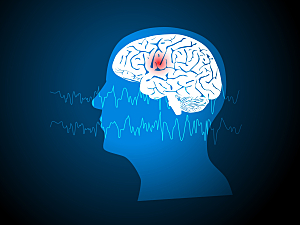Drug-resistant epilepsy is widely considered a network disorder and may benefit from multiple-target neurostimulation. Both the anterior (ANT) and centromedian (CMT) nuclei of the thalamus have been efficacious targets in trials that used open-loop stimulation, meaning ongoing activity in the target region was not assessed before stimulation and stimulation was not adjusted according to that activity.
Closed-loop systems allow for concurrent sampling and modulation of extended thalamic networks. Researchers at Brigham and Women’s Hospital have become the first to capture continuous recordings of seizure activity from multiple thalamic nuclei within one brain hemisphere of a patient using a closed-loop neurostimulation system.
John D. Rolston, MD, PhD, director of the Mapping and Engineering Neural Dynamics (MEND) Laboratory in the Department of Neurosurgery at the Brigham, and colleagues report the observations in the Annals of Clinical and Translational Neurology.
Introduction to the Case
The patient was a 37-year-old man with unilateral broad-onset drug-resistant epilepsy, first diagnosed at nine years of age. At the time of evaluation, he had focal impaired awareness seizures (FIASs)–feelings of déjà vu and confusion that progressed to speech arrest and manual automatisms occurring two or three times monthly.
The patient also had secondary generalized tonic–clonic seizures (GTCs) two or three times per month. Electroencephalography showed wide left-sided frontotemporal involvement. The patient was able to perform all activities of daily living independently but reported significant deficits in memory and attention.
Implantation
A multidisciplinary epilepsy team decided on left-sided implantation of the Responsive Neurostimulation System (RNS; Neuropace, Mountainview, CA) with an electrode in the ANT to address the limbic network and a second electrode in the CMT to address frontal networks and the GTCs. These leads also sample the pulvinar and mediodorsal nucleus on the left side.
The paper gives details of the presurgical workup and technical aspects of the procedure.
Postoperative Findings
At the 10-month follow-up, the patient reported no secondary GTCs and no FIASs since surgery (Engel 1B outcome). He was having one focal awareness seizure per day, which resembled his FIASs except he had been able to maintain consciousness, so he found them far less debilitating than his prior seizures. He was being maintained on lamotrigine and cenobamate without side effects.
The RNS allows continuous recording of electrocorticogram data. The ictal activity was consistently recorded first in the CMT and then ANT, implying a temporally organized seizure network involving the thalamus exists in this patient. Stimulation of ANT and CMT together was related to improved seizure burden.
Proof of Principle
As a report of a single patient, this case cannot be used to make generalized claims about the effects of closed-loop thalamic stimulation. Nevertheless, it presents a proof of principle on several fronts: Ictal activity can be recorded throughout the thalamus, thalamic activity can be used to trigger the RNS, and stimulating multiple thalamic nuclei may lead to positive clinical outcomes for patients with wide-field, unilateral ictal-onset seizures.
